This is the first article in a series about the different cultural groups in Namibia. In this article, we will learn about the San people, one of the oldest and most marginalised ethnic groups in the country.
The San People: A Cultural Overview
The San (Bushman), the earliest known inhabitants of Namibia, belong to the Khoesan people. Generally short in stature, they have light yellow-brown skins, while their language, which differs among the various groups, is characterised by numerous click sounds.
The San are divided into five main groups, each with their own history, customs and language. These groups are:
- Ju/’hoansi
- Hai//om
- !Kung
- Kxoe
- Nama
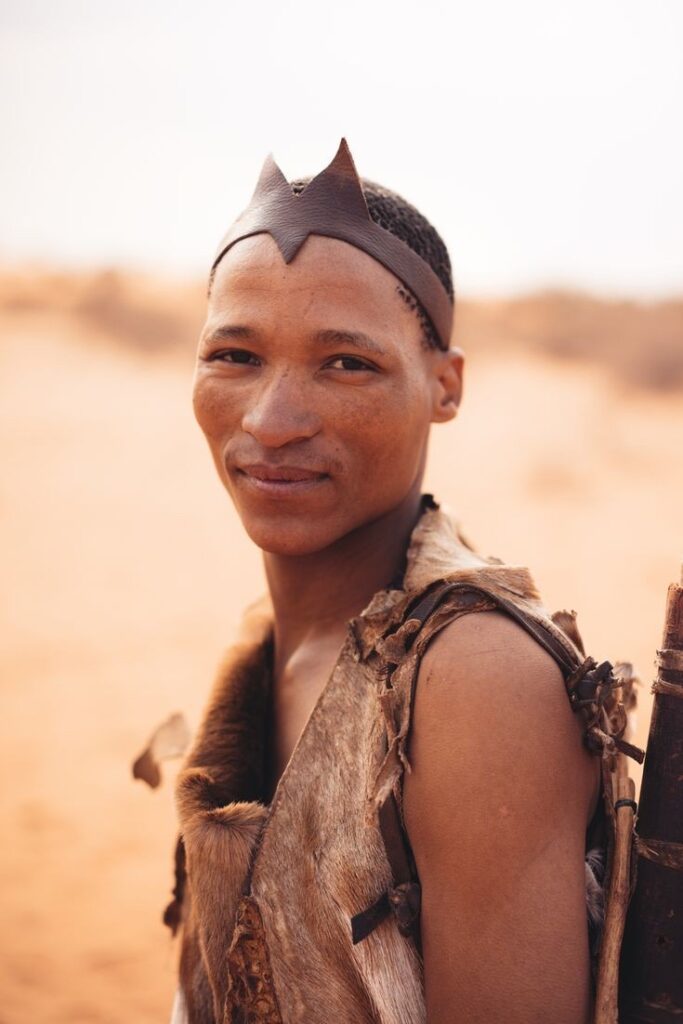
What was formerly known as Bushmanland is the area that is most frequently associated with the San people. The Ju/’hoansi of eastern Bushmanland have retained some of their traditional territories and still pursue their traditional way of life to some extent by gathering veld food, while hunting with the use of traditional weapons is still pursued.
The Hai//om traditionally inhabited Etosha, as well as the Kunene and Western and Eastern Kavango regions. The !Kung, which had the widest traditional distribution in Namibia, include the Ju/’hoansi in Bushmanland where they have retained some access to their traditional territory. The Bwabwata National Park forms part of the traditional core territory of the Kxoe-speaking San.
History
These hunter-gatherers roamed the southern African plains for thousands of years in small nomadic groups. The wealth of rock paintings and engravings in mountains and hills throughout Namibia bear witness to their former extensive range. The oldest rock art dates back some 28 000 years. The Brandberg has one of the largest concentrations of rock paintings in Africa, while Twyfelfontein, Namibia’s first World Heritage Site, has one of the richest collections of rock engravings on the continent.
The San were systematically displaced and dispossessed of their traditional territories – first with the arrival of the Bantu- speaking people and later by the arrival of white settlers – and driven out to the most remote and harsh environments of southern Africa. Most of the San became farmworkers, while large numbers joined the South African Defence Force during the war of independence.
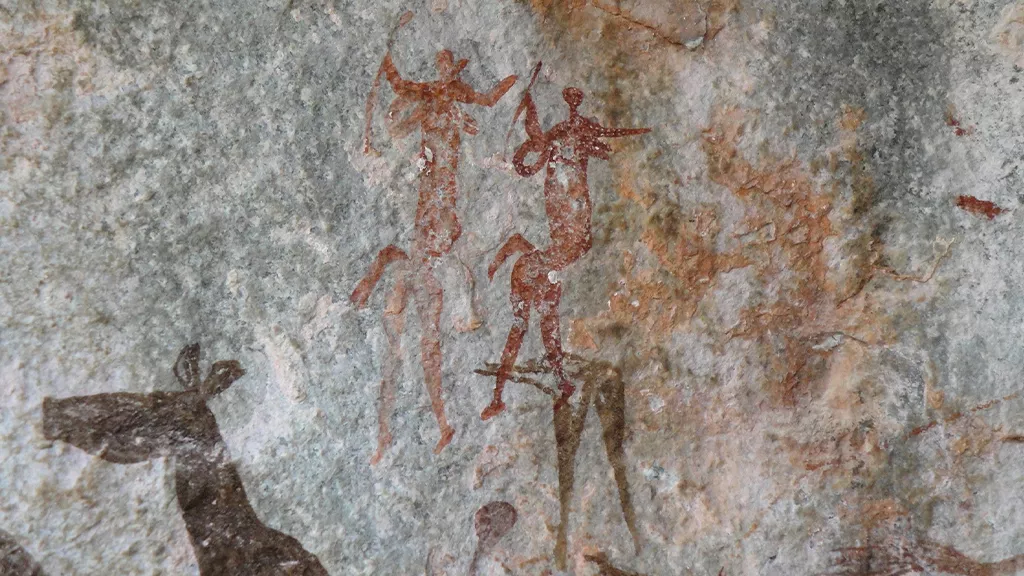
Cultural practices
The San people have a rich and diverse culture, which is reflected in their language, art, music, and dance. Their language, Khoisan, is one of the oldest languages in the world and is characterized by its use of clicks. San art is often made from natural materials such as ostrich eggshells, seeds, and berries. Their music and dance are often used to celebrate important events in their lives, such as births, deaths, and weddings. There is a nightly, long-lasting medicine trance dance, which is considered a central healing remedy. During this trance experience, the supernatural power n/um is awakened, which cures diseases and benefits the group.
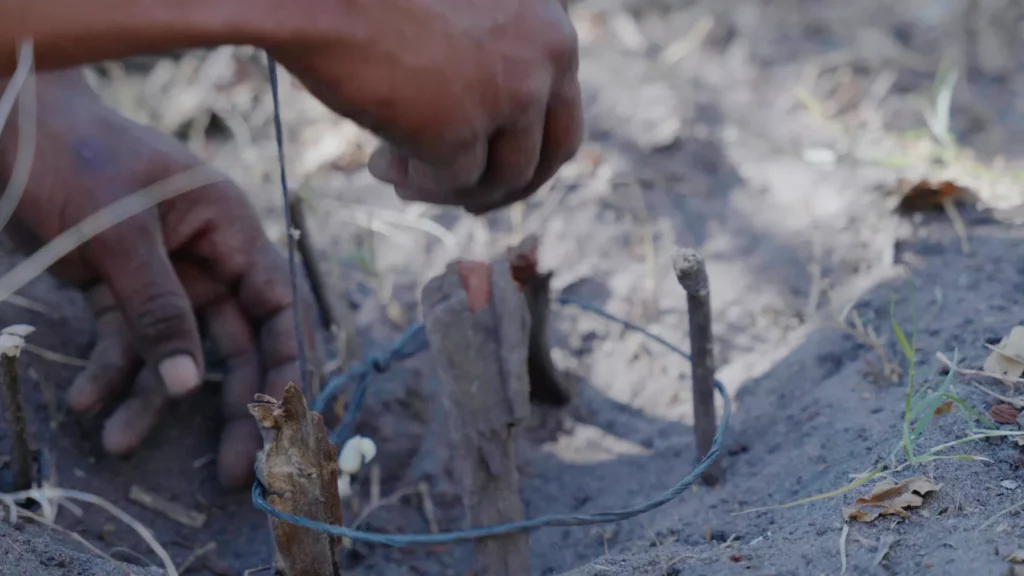
Modern Living
The San people are facing many challenges in the modern world. The San people are the only ethnic group in Namibia whose health status has declined since independence. Livelihoods will likely continue to decline unless their land rights are guaranteed. They are one of the greatly disadvantaged ethnic groups in the country and have limited access to education, healthcare, and employment opportunities. If this maltreatment continues – namely, the fencing off of their resources (and subsequent lack of self-sufficiency) on conservancy land, the mistreatment by dominant ethnic groups and by trophy hunting operators – then generations of knowledge, language and culture will soon be lost.
Despite these challenges, the San people are determined to preserve their culture and way of life. They are working to reclaim their land, to improve their education and healthcare, and to combat discrimination. They are also working to raise awareness of their culture and to promote understanding between the San and other ethnic groups in Namibia.
Fun Facts:
- Thirst quencher in the Kalahari Desert: Due to the San’s harsh environment, water is a rare resource. To get water in the Kalahari Desert, they use the root of the “bi! bulb”. If it is squeezed, it provides water. Scooping out the morning dew also serves as a source of water. To store water, the San utilise ostrich eggshells.
- Men hunt in long, laborious tracking excursions. They kill their game using bow and arrows and spears tipped in diamphotoxin, a slow-acting arrow poison produced by beetle larvae of the genus Diamphidia.
- Women’s traditional gathering gear is simple and effective: a hide sling, a blanket, a cloak called a kaross to carry foodstuffs, firewood, smaller bags, a digging stick, and perhaps, a smaller version of the kaross to carry a baby.
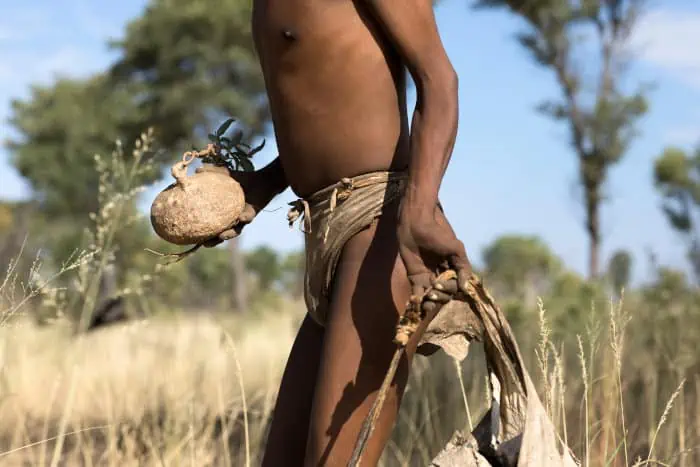
If you are interested in learning more about the San people, there are many resources available. You can visit the San Council of Namibia website, or you can read books and articles about the San. You can also visit the San people in their communities and learn about their culture firsthand.


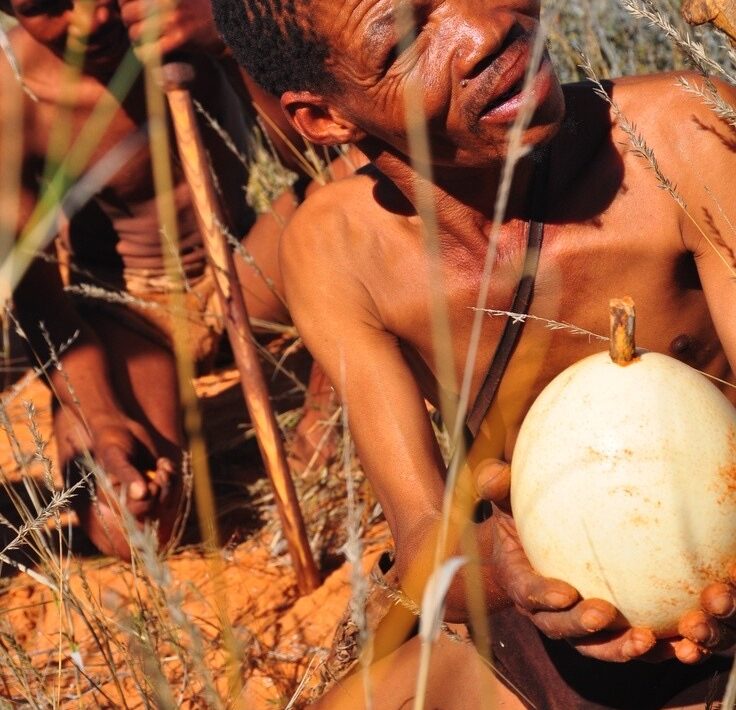

One Reply to “Namibia’s Rich Cultural Heritage: The San”